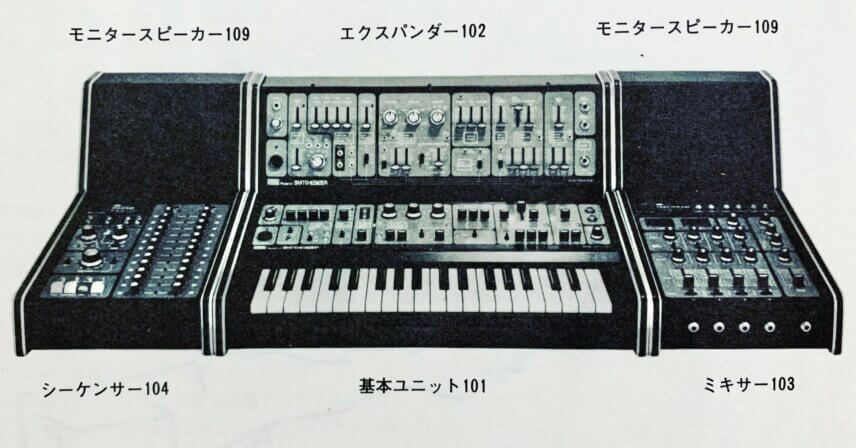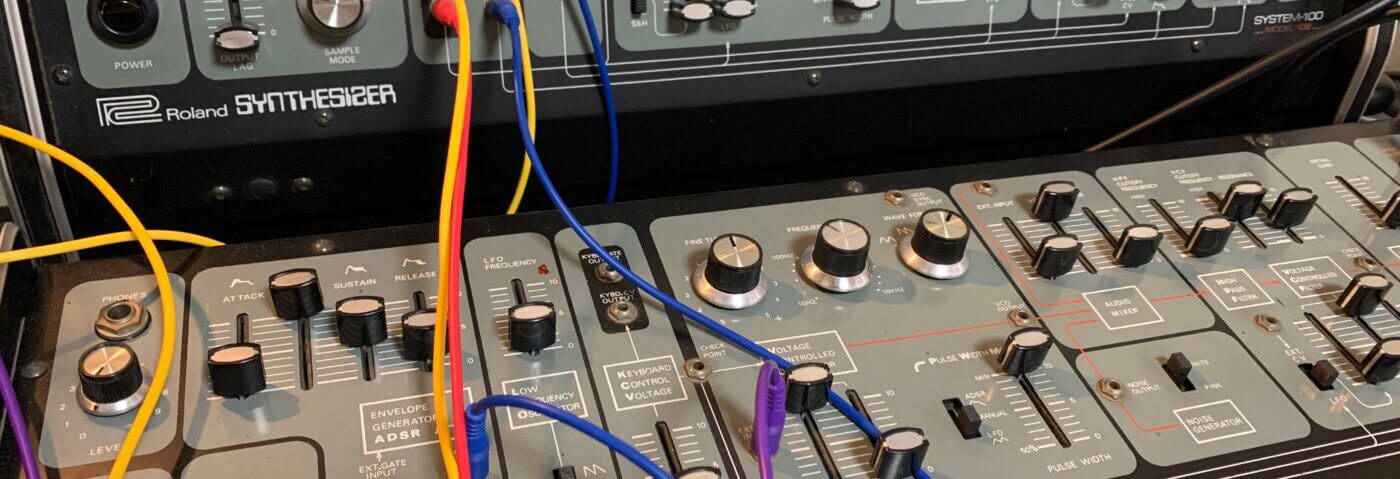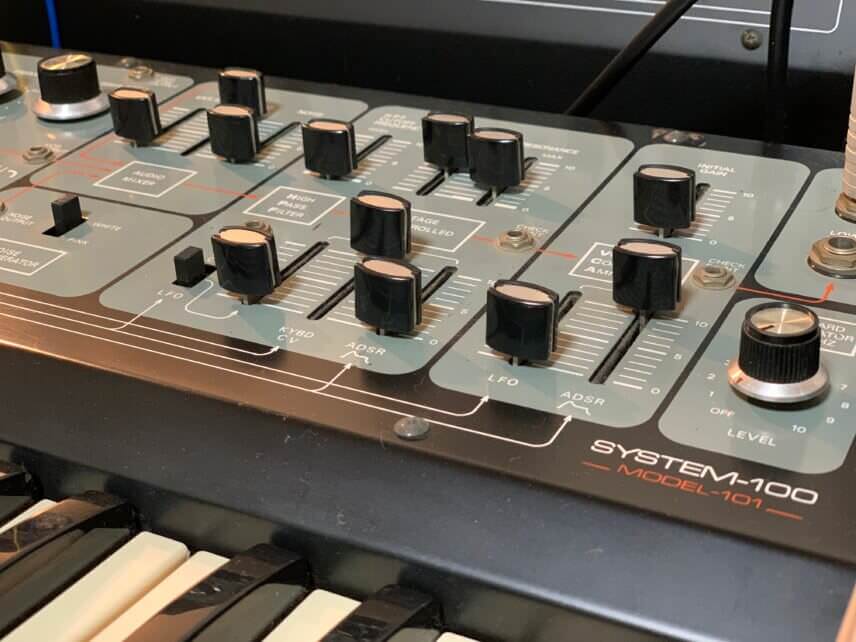In our latest Hardware Focus, we take a look at Roland’s 1975 semi-modular behemoth, the System 100.
Resembling a spaceship cockpit as much as a musical instrument, Roland’s System 100 is the stuff that analogue synthesizer dreams are made of. With its grey and black colour scheme and silver sliders and knobs, it wouldn’t look out of place on the Millennium Falcon. And, thanks to its horizontal orientation (as opposed to the vertical largely favoured by more conventional modular systems) it remains a unique synthesizer system to this day.

From the original Japanese manual.
Originally released in 1975, the System 100 was designed to be an all-in-one solution for the electronic musician. Elements could be purchased separately as need be, or all at once for the complete studio experience.
At the centre of the System 100 was the Model-101 analogue synthesizer. Featuring a single-oscillator, it’s capable of producing sawtooth, triangle, square, and pulse width waveforms, as well as noise. With its keyboard and conventional architecture of single oscillator, filter, and VCA, plus LFO, it makes a formidable instrument on its own. Pair it with the Model-102 synthesizer expander, however, and the possibilities really expand.
The 102 has similar specs as the 101 but adds sample & hold, ring modulation, and both strong and weak oscillator sync, with semi-modular patch points interspersed throughout the units allowing for all kinds of deep synthesis exploration.
Bringing the sounds of these machines together was the Model-103 powered mixer, which allowed for stereo panning, and also featured a spring reverb. Next, the Model-104 sequencer had a two-channel, 12-step sequencer, which made it particularly attractive for synth-pop bands looking to add rhythm to their songs. Lastly, the Model-109 speakers rounded out the complete set.

Photo: Adam Douglas for Attack Magazine .
While later Roland gear has a (deserved) reputation for having a rather clean sound, such as the fully modular System 100m, the System 100 is decidedly beefy, particularly in the low end. The transistor ladder filter, which has both resonant low-pass and non-resonant high-pass, is capable of a squelch and warble that isn’t quite MS-20 territory but can pridefully hold its own. All of this plus a step sequencer means the System 100 is an almost perfect, self-contained techno machine. Petar Dundov used it extensively on his album, At The Turn Of The Equilibrium, and it’s indicative of the system’s versatility that it provided a variety of sounds, including bass, melody, and effects.
The System 100 was only in production for four years, and yet the influence it has had on electronic music should not be ignored. While later dance music producers were certainly no strangers to the System 100, it was the pioneers of synth pop, such as Kraftwerk, Depeche Mode, and particularly The Human League, that first cottoned on to the power of the system. The latter’s Martyn Ware used an expanded System 100 with multiples of several components extensively on the first two Human League albums, Reproduction and Travelogue. For a testament of what the System 100 is capable of, listen to ‘Being Boiled‘ and marvel in all its 1970s analogue girth and grit.
Complete System 100 sets occasionally show up on the market but they are understandably expensive. The most commonly available component is the Model-101 synthesizer but again, not cheap. If you’re after the System 100 sound but don’t care to sell off any vital organs, Roland have made a modern emulation available as a plug-out for its AIRA synths and as part of its Cloud subscription service.

